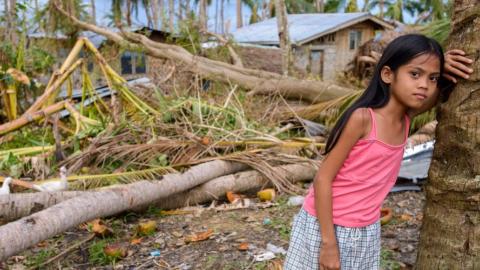
What is a humanitarian disaster?
A humanitarian disaster occurs when the human, physical, economic or environmental damage from an event, or series of events, overwhelms a community’s capacity to cope.
Different types of emergencies
An event or hazard can be naturally occurring or man-made. It can come on rapidly or gradually.
Naturally occurring hazards (as classified by EM-DAT ) include:
- Geophysical – earthquakes, volcanos, landslides, avalanches, tsunamis
- Meteorological – storms, cyclones, hurricanes, typhoons, blizzards
- Hydrological – floods, storm surges
- Climatic events – droughts, extreme temperatures, wildfires
- Biological – epidemics, infestations
Man-made hazards include conflict, environmental degradation, pollution and industrial accidents.
Complex emergencies result from a combination of man-made and natural hazards. These generally involve violence and loss of life, the displacement of populations and extensive damage to societies and economies.
The number and scale of these complex emergencies has surged in the past decade with the proliferation and intensification of civil conflicts.
Who is most affected by emergencies?
While emergencies affect both rich and poor countries, children and families living in poorer communities are more vulnerable because they have fewer resources to draw on to plan for, cope with, and recover from disaster.
For richer communities, where effective planning processes and emergency services are in place the worst effects of an emergency can be avoided. Fire brigades, ambulances, doctors, hospitals and substantial government budgets can reduce the impact felt by communities and facilitate effective response and recovery. In poorer communities these supports are often inadequate or non-existent.
Population pressures in poor urban areas often mean large numbers of people are forced to live in unplanned communities with little or no infrastructure. Many are in risk-prone areas, such as earthquake zones and floodplains. Because they can’t afford proper building materials, their houses are often structurally unsound or unsafe.
In these poor communities, droughts can lead to food shortages. Floods can cause disease. Earthquakes and hurricanes can result in homelessness.
Rebuilding may be so difficult that a community is even more vulnerable if another disaster occurs. Furthermore, people living in these communities have no money or assets left after a disaster to rebuild their livelihoods or resettle in safer areas. Their governments are often in no position to offer loans or grants.
Being prepared and having strategies in place to assist as soon as possible after a disaster strikes is just one way we help people most in need.
Assessing and responding
No two emergencies are the same. When a disaster strikes, we first consider the impact, context and causes of the emergency to determine our response. We’ve developed a detailed and comprehensive methodology to do just that.
Our response strategy reacts to the scale and nature of the emergency, as well as understanding local resilience and capacity to cope. It focuses on assisting the most vulnerable, including children, to ensure people's basic needs are met and human rights are protected.
In large-scale disasters we collaborate with the United Nations and other international and local aid agencies. This helps to avoid duplication, maximises efficiencies and ensures there are no gaps in the overall humanitarian response.
Beyond response, disaster management
Responding to current emergencies is just one part of our response to disasters. Our approach to disaster management means we are active before, during and after disasters strike, focusing on the following areas:
- Water and sanitation
- Health and nutrition
- Food
- Child protection
- Education for children
- Shelter
- Humanitarian protection
- Humanitarian advocacy
Before an emergency, we monitor signals and indicators to provide early warning and works with communities to help them reduce their vulnerability and risk.
We also pre-position relief supplies and prepare staff so they can be deployed within hours of a major emergency.
This immediate emergency response is followed by a phase of recovery and transition, where we work to help communities get back on their feet, re-establish livelihoods and be more resilient to future hazards.
LEARN MORE
- Read the latest stories from our emergency responses around the globe